"公共政策"相关数据
更新时间:2024-05-01Augmented and virtual reality technologies (AR/NR), also known as extended reality (XR)- immersive technologies that enable users to experience digitally rendered content in both physical and virtual spaces- have the potential to transform the ways in which people communicate, work, and learn. No longer just for niche enthusiasts or high-tech industries, these technologies are already being used across sectors to overcome physical space barriers and enhance how individuals can interact with the world around them. As ARNR technologies proliferate across homes, workplaces, classrooms, and other aspects of everyday life, they raise unique considerations for policymakers. To bring these considerations to the forefront of policy debates, the Information Technology and Innovation Foundation partnered with the XR Association to host a half- day Augmented and Virtual Reality Policy Conference on October21, 2021. The conference brought together 21 speakers from across sectors and industries to discuss key considerations and potential recommendations for policymakers as we move toward a more immersive future. Awareness and interest in the power and potential of AR/NR are certainly growing among policymakers. For example, the 2021 U.S. Innovation and Competition Act identifies “immersive technology" as one of 10 key technology focus areas. The VR TECHS Act,introduced in 2019, proposed creating a“Federal Advisory Committee on the Usability of Reality Technologies Within the Federal Government." And the Congressional Caucus on Virtual, Augmented, and Mixed Realities was formed in 2017 to enable members“to educate [their] colleagues and others to ensure Congress is doing all it can to encourage-- rather than hinder- these enterprising fields." However, ARNR technologies and their applications are rarely considered in broader discussions of key policy issues, including privacy, security, online safety, and the future of education and work.
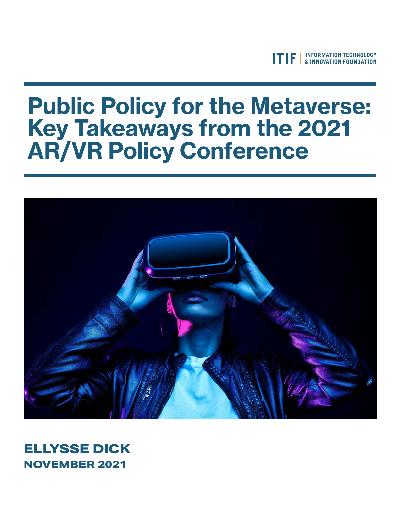
 元宇宙的公共政策:2021年ARVR政策会议的关键要点Augmented and virtual reality technologies (AR/NR), also known as extended reality (XR)- immersive technologies that enable users to experience digitally rendered content in both physical and virtual spaces- have the potential to transform the ways in which people communicate, work, and learn.2021年发布时间:2021-12-03
元宇宙的公共政策:2021年ARVR政策会议的关键要点Augmented and virtual reality technologies (AR/NR), also known as extended reality (XR)- immersive technologies that enable users to experience digitally rendered content in both physical and virtual spaces- have the potential to transform the ways in which people communicate, work, and learn.2021年发布时间:2021-12-03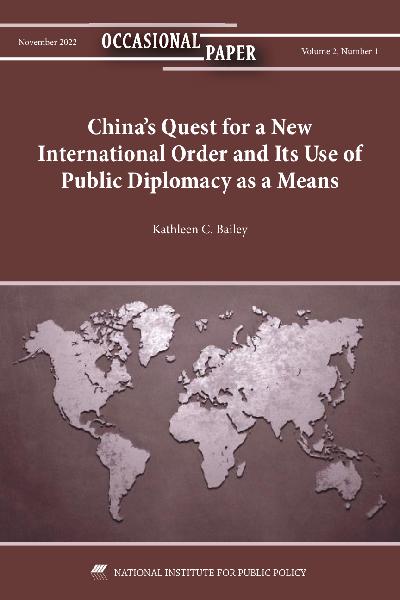 中国的公共外交和国际新秩序(英)2022年发布时间:2023-02-01
中国的公共外交和国际新秩序(英)2022年发布时间:2023-02-01 变革中的中国医疗业——公共政策的变革和所带来的机遇中国经济经过三十年的改革取得了巨大成就中国的医疗卫生事业也获得了长足的发展。 在二十世纪中国大部分时间都致力于建立相对完善的全民医保制度开展公共卫生运动力争实现由国家负担人民的“生老病死”。尽管始于1978年的改革开放顺利推动中国经济进入了二十一世纪·但在医疗制度方面的改革步伐却相对缓慢。 看病难问题在很多地方存在特别是农村地区大部分患者主要依靠自费方式或通过自愿性商业保险来支付不断上升的医疗费用面对这种形势﹐中央政府意识到必须进行改革。不过中央政府的改革计划并不是采取无所不包的方式而是通过徵求各方意见来逐步推出政策。 目前全国﹑各省市及农村地区医疗制度改革最终的实施方式仍有待明确。不过徵求意见的过程也透露出一些重要信息比如哪些领域可能出现重大改革以及私营部门在其中扮演什么角色及如何获益。 在本报告中我们还分析了中国医疗行业在今后几年可能出现的商机。我们希望本报告所做的分析对阁下有所裨益。2011年发布时间:2021-06-02
变革中的中国医疗业——公共政策的变革和所带来的机遇中国经济经过三十年的改革取得了巨大成就中国的医疗卫生事业也获得了长足的发展。 在二十世纪中国大部分时间都致力于建立相对完善的全民医保制度开展公共卫生运动力争实现由国家负担人民的“生老病死”。尽管始于1978年的改革开放顺利推动中国经济进入了二十一世纪·但在医疗制度方面的改革步伐却相对缓慢。 看病难问题在很多地方存在特别是农村地区大部分患者主要依靠自费方式或通过自愿性商业保险来支付不断上升的医疗费用面对这种形势﹐中央政府意识到必须进行改革。不过中央政府的改革计划并不是采取无所不包的方式而是通过徵求各方意见来逐步推出政策。 目前全国﹑各省市及农村地区医疗制度改革最终的实施方式仍有待明确。不过徵求意见的过程也透露出一些重要信息比如哪些领域可能出现重大改革以及私营部门在其中扮演什么角色及如何获益。 在本报告中我们还分析了中国医疗行业在今后几年可能出现的商机。我们希望本报告所做的分析对阁下有所裨益。2011年发布时间:2021-06-02 老龄社会的就业与养老金报告人口老龄化引发经济社会新常态,伴随人均寿命的延长,需要适度增加劳动人口年龄和推迟领取养老金年龄,提高劳动人口的就业参与率,这是一个必要的公共选择,也是本研究报告的核心问题。2014-2030年发布时间:2019-04-04
老龄社会的就业与养老金报告人口老龄化引发经济社会新常态,伴随人均寿命的延长,需要适度增加劳动人口年龄和推迟领取养老金年龄,提高劳动人口的就业参与率,这是一个必要的公共选择,也是本研究报告的核心问题。2014-2030年发布时间:2019-04-04 2019年美国汽车与公共交通工具的平均速度和通勤时间该统计数据包含了2019年美国汽车与公共交通工具的平均速度和通勤时间。2019年美国公共交通工具的平均速度为13英里/小时,平均通勤时间为48分钟。2019年发布时间:2021-11-17
2019年美国汽车与公共交通工具的平均速度和通勤时间该统计数据包含了2019年美国汽车与公共交通工具的平均速度和通勤时间。2019年美国公共交通工具的平均速度为13英里/小时,平均通勤时间为48分钟。2019年发布时间:2021-11-17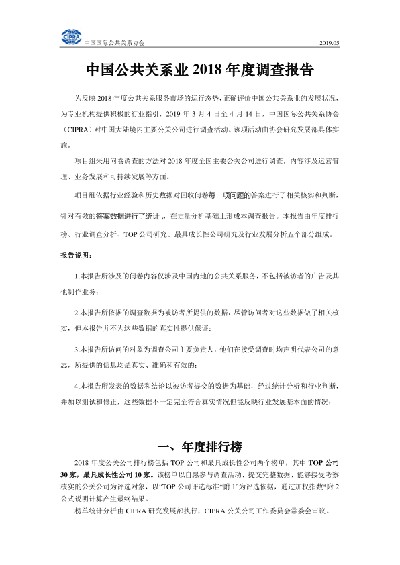 中国公共关系业2018年度调查报告报告指出,尽管近年来中国经济面临下行压力,但2018年中国公共关系市场依然呈现稳步增长态势,表明市场对公关的需求在不断增加。据调查估算,2018年,整个市场的年营业规模达到627亿人民币,年增长率约11.9%。2018年发布时间:2019-05-16
中国公共关系业2018年度调查报告报告指出,尽管近年来中国经济面临下行压力,但2018年中国公共关系市场依然呈现稳步增长态势,表明市场对公关的需求在不断增加。据调查估算,2018年,整个市场的年营业规模达到627亿人民币,年增长率约11.9%。2018年发布时间:2019-05-16 “新基建”政策白皮书白皮书从国内发展现状、国内政策分析(策略与目标)、国际比较三个方面进行研究,选取了国内重点省、市的“新基建”投资规模及重点发展方向进行了测算和分析,并在上述基础上提出政策建议,以供决策参考。2018-2020年发布时间:2020-05-18
“新基建”政策白皮书白皮书从国内发展现状、国内政策分析(策略与目标)、国际比较三个方面进行研究,选取了国内重点省、市的“新基建”投资规模及重点发展方向进行了测算和分析,并在上述基础上提出政策建议,以供决策参考。2018-2020年发布时间:2020-05-18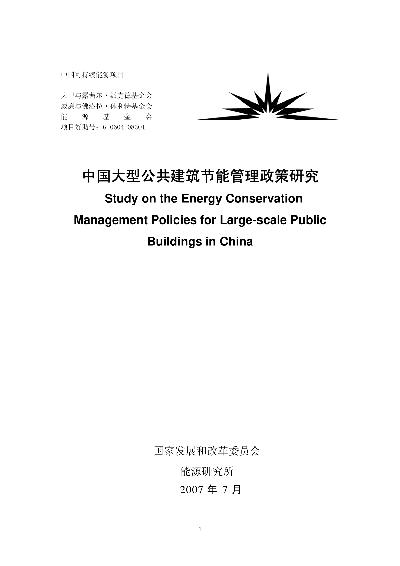 中国大型公共建筑节能管理政策研究对公共建筑进行深入的分析发现,面积较小、不使用中央空调的一般公共建筑,单位建筑面积年电耗为40~60kWh;而面积较大且采用中央空调的公共建筑,单位建筑面积年电耗高达70~350kWh,是普通居民住宅的10~15倍,如图4(a)所示,但由于其内部产热量大,采暖能耗甚至低于住宅和一般公共建筑.2007年发布时间:2021-10-27
中国大型公共建筑节能管理政策研究对公共建筑进行深入的分析发现,面积较小、不使用中央空调的一般公共建筑,单位建筑面积年电耗为40~60kWh;而面积较大且采用中央空调的公共建筑,单位建筑面积年电耗高达70~350kWh,是普通居民住宅的10~15倍,如图4(a)所示,但由于其内部产热量大,采暖能耗甚至低于住宅和一般公共建筑.2007年发布时间:2021-10-27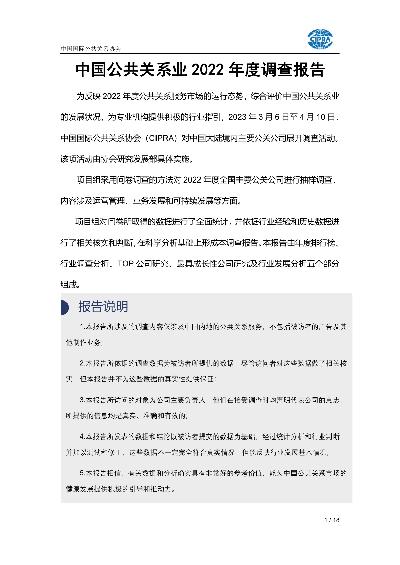 中国公共关系业2022年度调查报告2022年发布时间:2023-11-24
中国公共关系业2022年度调查报告2022年发布时间:2023-11-24 2013-2018年中国公共关系市场年增长率变化情况该统计数据包含了2013-2018年公共关系市场年增长率变化情况。2018年公共关系市场年增长率为11.9%。2013-2018年发布时间:2019-05-16
2013-2018年中国公共关系市场年增长率变化情况该统计数据包含了2013-2018年公共关系市场年增长率变化情况。2018年公共关系市场年增长率为11.9%。2013-2018年发布时间:2019-05-16 2018年中国公共关系行业业务领域构成的样本分析统计该统计数据包含了2018年中国公共关系行业业务领域构成的样本分析统计。2018年中国公共关系行业汽车业务领域公司数达36家。2018年发布时间:2019-05-16
2018年中国公共关系行业业务领域构成的样本分析统计该统计数据包含了2018年中国公共关系行业业务领域构成的样本分析统计。2018年中国公共关系行业汽车业务领域公司数达36家。2018年发布时间:2019-05-16 1998-2018年中国公共关系市场年度营业额变化情况该统计数据包含了1998-2018年公共关系市场年度营业额变化情况。2018年公共关系市场年度营业额为627亿元。1998-2018年发布时间:2019-05-16
1998-2018年中国公共关系市场年度营业额变化情况该统计数据包含了1998-2018年公共关系市场年度营业额变化情况。2018年公共关系市场年度营业额为627亿元。1998-2018年发布时间:2019-05-16 2017-2018年中国公共关系行业业务潜力市场构成的样本分析统计该统计数据包含了2017-2018年中国公共关系行业业务潜力市场构成的样本分析统计。2018中国公共关系行业业务潜力市场构成中新媒体营销达39家。2017-2018年发布时间:2019-05-20
2017-2018年中国公共关系行业业务潜力市场构成的样本分析统计该统计数据包含了2017-2018年中国公共关系行业业务潜力市场构成的样本分析统计。2018中国公共关系行业业务潜力市场构成中新媒体营销达39家。2017-2018年发布时间:2019-05-20 2017-2018年中国公共关系行业业务类型市场构成的样本分析统计该统计数据包含了2017-2018年中国公共关系行业业务类型市场构成的样本分析统计。2018年中国公共关系行业业务类型市场构成中,新媒体有18家。2017-2018年发布时间:2019-05-20
2017-2018年中国公共关系行业业务类型市场构成的样本分析统计该统计数据包含了2017-2018年中国公共关系行业业务类型市场构成的样本分析统计。2018年中国公共关系行业业务类型市场构成中,新媒体有18家。2017-2018年发布时间:2019-05-20 2017-2018年中国公共关系行业新媒体业务服务内容构成的样本分析统计该统计数据包含了2017-2018年中国公共关系行业新媒体业务服务内容构成的样本分析统计。2018年中国公共关系行业新媒体业务服务内容产品推广为37家。2017-2018年发布时间:2019-05-20
2017-2018年中国公共关系行业新媒体业务服务内容构成的样本分析统计该统计数据包含了2017-2018年中国公共关系行业新媒体业务服务内容构成的样本分析统计。2018年中国公共关系行业新媒体业务服务内容产品推广为37家。2017-2018年发布时间:2019-05-20 2005-2013年印度国家政策和制度评估(CPIA)公共管理质量评级(1=低至6=高)该数据包含了2005-2013年国家政策和制度评估 (CPIA) 公共管理质量评级(1=低至 6=高)(印度)。2005评级为3.5。2005-2013年发布时间:2019-09-04
2005-2013年印度国家政策和制度评估(CPIA)公共管理质量评级(1=低至6=高)该数据包含了2005-2013年国家政策和制度评估 (CPIA) 公共管理质量评级(1=低至 6=高)(印度)。2005评级为3.5。2005-2013年发布时间:2019-09-04 平台经济与竞争政策观察本文阐述了平台经济发展态势、平台崛起引发的竞争忧虑,分析了全球主要国家数字平台竞争监管态势,介绍了数字市场反垄断监管的重要议题,展望了平台经济发展趋势与竞争政策。2020年发布时间:2020-06-08
平台经济与竞争政策观察本文阐述了平台经济发展态势、平台崛起引发的竞争忧虑,分析了全球主要国家数字平台竞争监管态势,介绍了数字市场反垄断监管的重要议题,展望了平台经济发展趋势与竞争政策。2020年发布时间:2020-06-08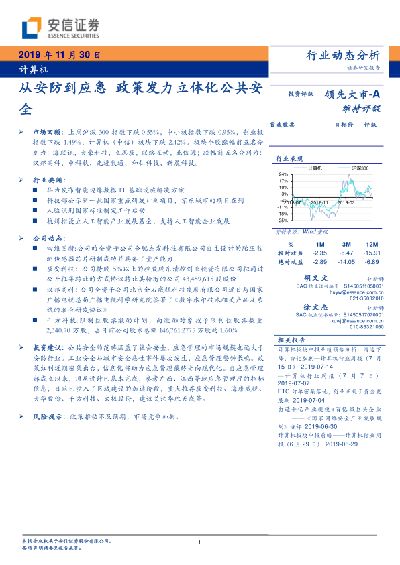 计算机行业动态分析:从安防到应急,政策发力立体化公共安全公共安全的范畴涵盖了社会安全,应急管理的市场规模也远大于安防行业。工业安全与城市安全恶性事件屡次发生,应急管理警钟长鸣。政策红利近期密集出台,信息化将助力应急管理最终走向现代化。2019年发布时间:2020-04-18
计算机行业动态分析:从安防到应急,政策发力立体化公共安全公共安全的范畴涵盖了社会安全,应急管理的市场规模也远大于安防行业。工业安全与城市安全恶性事件屡次发生,应急管理警钟长鸣。政策红利近期密集出台,信息化将助力应急管理最终走向现代化。2019年发布时间:2020-04-18 中國公共採購-截至二零二一年十二月三十一日止十二個月之第二次中期業績公告2021年发布时间:2022-03-25
中國公共採購-截至二零二一年十二月三十一日止十二個月之第二次中期業績公告2021年发布时间:2022-03-25 2005-2013年印度国家政策和制度评估(CPIA)公共资源使用公平性评级(1=低至6=高)该数据包含了2005-2013年国家政策和制度评估 (CPIA) 公共资源使用公平性评级(1=低至 6=高)(印度)。2005评级为4.0。2005-2013年发布时间:2019-09-04
2005-2013年印度国家政策和制度评估(CPIA)公共资源使用公平性评级(1=低至6=高)该数据包含了2005-2013年国家政策和制度评估 (CPIA) 公共资源使用公平性评级(1=低至 6=高)(印度)。2005评级为4.0。2005-2013年发布时间:2019-09-04





